
Sudden Fear is a 1952 American film noir thriller film directed by David Miller, and starring Joan Crawford and Jack Palance in a tale about a successful woman who marries a murderous man. The screenplay by Lenore J. Coffee and Robert Smith was based upon the novel of the same name by Edna Sherry.

Dirty Harry is a 1971 American neo-noir action thriller film produced and directed by Don Siegel, the first in the Dirty Harry series. Clint Eastwood plays the title role, in his first appearance as San Francisco Police Department (SFPD) Inspector "Dirty" Harry Callahan. The film drew upon the real-life case of the Zodiac Killer as the Callahan character seeks out a similar vicious psychopath.
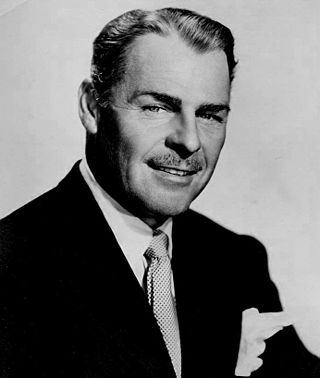
Waldo Brian Donlevy was an American actor, who was noted for playing dangerous and tough characters. Usually appearing in supporting roles, among his best-known films are Beau Geste (1939), The Great McGinty (1940) and Wake Island (1942). For his role as the sadistic Sergeant Markoff in Beau Geste, he was nominated for the Academy Award for Best Supporting Actor.

Ella Wallace Raines was an American film and television actress active from the early 1940s through the mid-1950s. Described as "sultry" and "mysterious", the green-eyed star appeared frequently in crime pictures and film noir, but also in drama, comedy, Westerns, thrillers, and romance.

The Big Combo is a 1955 American crime film noir directed by Joseph H. Lewis, written by Philip Yordan and photographed by cinematographer John Alton, with music by David Raksin. The film stars Cornel Wilde, Richard Conte and Brian Donlevy, as well as Jean Wallace, who was Wilde's wife at the time. The supporting cast features Lee Van Cleef, Earl Holliman and the final screen appearance of actress Helen Walker.
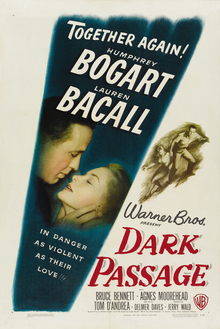
Dark Passage is a 1947 American film noir directed by Delmer Daves and starring Humphrey Bogart and Lauren Bacall. The film is based on the 1946 novel of the same title by David Goodis. It was the third of four films real-life couple Bacall and Bogart made together.

Born to Kill is a 1947 RKO Pictures American film noir starring Lawrence Tierney, Claire Trevor and Walter Slezak with Esther Howard, Elisha Cook Jr., and Audrey Long in supporting roles. The film was director Robert Wise's first film noir production, preceding his later work on The Set-Up (1949) and The Captive City (1952).

Raw Deal is a 1948 American film noir crime film directed by Anthony Mann and starring Dennis O'Keefe, Claire Trevor and Marsha Hunt. It was shot by cinematographer John Alton with sets designed by the art director Edward L. Ilou. An independent production by Edward Small, it was distributed by Eagle-Lion Films.

Nora Prentiss is a 1947 American film noir directed by Vincent Sherman and starring Ann Sheridan, Kent Smith, Bruce Bennett, and Robert Alda. It was produced and distributed by Warner Bros. The cinematography is by James Wong Howe and the music was composed by Franz Waxman. The film's sets were designed by the art director Anton Grot.

Dirty Harry is an American neo-noir action thriller film series featuring San Francisco Police Department Homicide Division Inspector "Dirty" Harry Callahan. There are five films: Dirty Harry (1971), Magnum Force (1973), The Enforcer (1976), Sudden Impact (1983) and The Dead Pool (1988). Clint Eastwood portrayed Callahan in all five films and directed Sudden Impact.
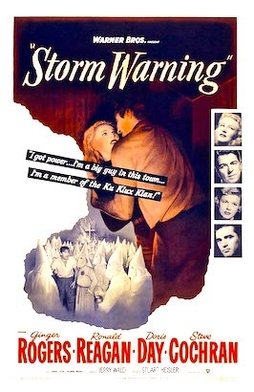
Storm Warning is a 1950 American thriller film noir starring Ginger Rogers, Ronald Reagan, Doris Day, and Steve Cochran. Directed by Stuart Heisler, it follows a fashion model (Rogers) traveling to a small Southern town to visit her sister (Day), who witnesses the brutal murder of an investigative journalist by the Ku Klux Klan (KKK). The original screenplay was written by Richard Brooks and Daniel Fuchs.
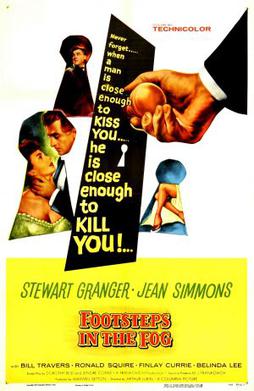
Footsteps in the Fog is a 1955 British Technicolor Victorian-era crime thriller starring Stewart Granger and Jean Simmons, with a screenplay co-written by Lenore Coffee and Dorothy Davenport, and released by Columbia Pictures. Directed by Arthur Lubin, the film is based on the W. W. Jacobs short story "The Interruption".
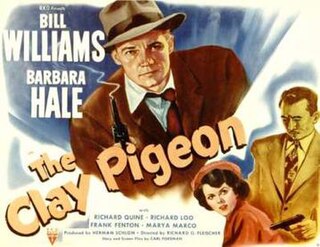
The Clay Pigeon is a 1949 American film noir directed by Richard Fleischer and written by Carl Foreman, based on a true story. The drama features Bill Williams and Barbara Hale, a real-life husband and wife.

The Lark Theater is a single-screen Art Deco cinema in Larkspur, California, United States.

The Great Lover is a 1931 American pre-Code romantic drama film directed by Harry Beaumont and starring Adolphe Menjou and Irene Dunne. The supporting cast includes Ernest Torrence, Neil Hamilton and Olga Baclanova. It as produced and distributed by Metro-Goldwyn-Mayer and based on the 1915 The Great Lover by Leo Ditrichstein. Dunne was loaned from RKO for the film.
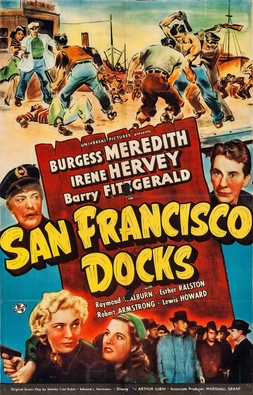
The San Francisco Docks is a 1940 American crime drama film directed by Arthur Lubin and starring Burgess Meredith, Barry Fitzgerald, and Irene Hervey.

Take One False Step is a 1949 American film noir crime film directed by Chester Erskine and starring William Powell, Shelley Winters and Marsha Hunt. It was produced and distributed by Universal Pictures.
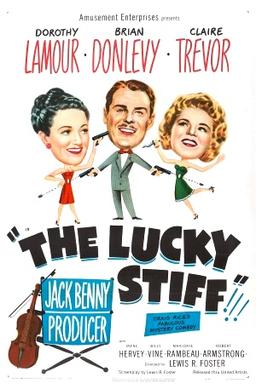
The Lucky Stiff is a 1949 American comedy crime film directed by Lewis R. Foster, starring Dorothy Lamour, Brian Donlevy, and Claire Trevor. The film is based on the 1945 novel of the same name by Craig Rice.
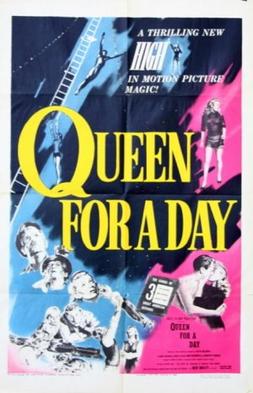
Queen for a Day is a 1951 American comedy film directed by Arthur Lubin and written by Seton I. Miller. The film stars Jack Bailey, Jim Morgan, Fort Pearson, Melanie York, Cynthia Corley, Kay Wiley and Helen Mowery. The film was released on July 7, 1951 by United Artists.

High Tension is a 1936 American comedy drama film directed by Allan Dwan and starring Brian Donlevy, Glenda Farrell, and Norman Foster. It was released by 20th Century Fox on July 17, 1936. The film was based on the story written by J. Robert Bren and Norman Houston.





















